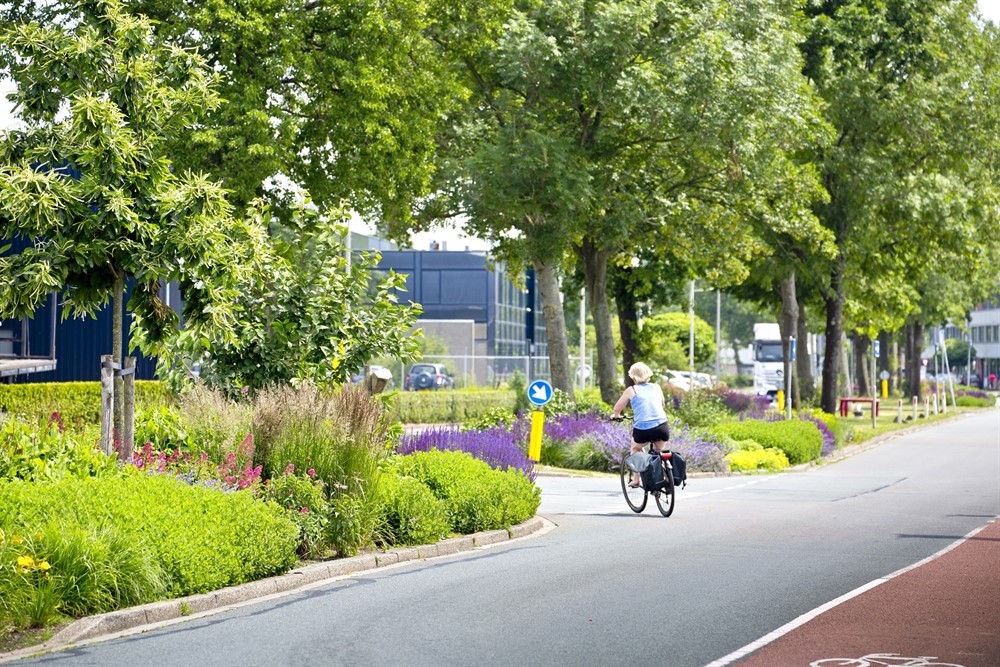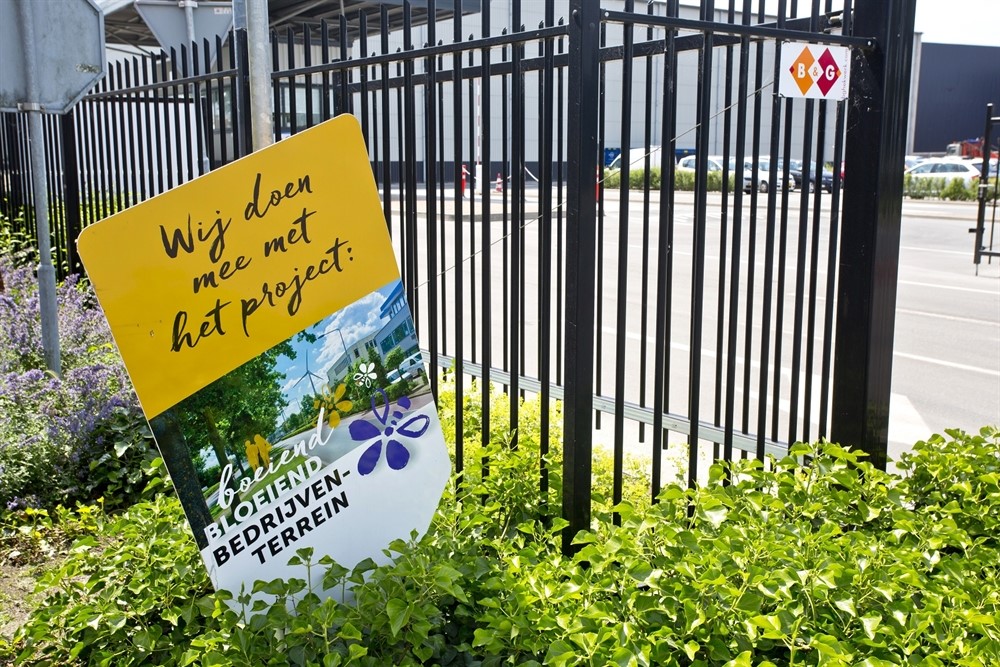Flourishing and Flowering Grote Polder industrial estate
In the purview of its Bee Landscape project, the Green Circles network had compiled a map of the ecological network in the Leiden region. Noticing that the Grote Polder industrial estate in Zoeterwoude showed up as a grey spot on the map has prompted the municipality of Zoeterwoude to set up the Flourishing and Flowering Industrial Estate project. The project is aimed at boosting biodiversity in and around the industrial estate, at enhancing the living environment, and at improving the climate resilience of the industrial estate.
Grote Polder ties in with Green Circles Bee Landscape
The focus on biodiversity has enabled the Grote Polder industrial estate to tie in with the Green Circles Bee Landscape. Green Circles is a network of businesses, research institutes, government bodies, and NGOs that is committed to a sustainable economy. Green Circles Bee Landscape is one of the projects initiated by Green Circles.
How has the municipality set about the project?
The municipality has involved a range of parties in the project: the entrepreneurs at the industrial estate; Heineken; the Grote Polder Business Investments Zone (BIZ); the Hoogheemraadschap van Rijnland district water control board; Wageningen University and Research (WUR); and Buro Lubbers. They convened a working group with representatives of the parties involved. The working group commissioned a spatial plan based on research and interviews with all the parties involved, had the EIS Insect Knowledge Centre conduct a baseline survey, and applied for regional and provincial grants. Such grants covered 40 per cent of the costs. The remaining costs were borne by the entrepreneurs and the municipality.
How has the municipality involved the entrepreneurs in the project?
To encourage Grote Polder entrepreneurs to participate in the project, the municipality of Zoeterwoude requested Heineken to motivate them, as the Heineken brewery, which is located adjacent to the Grote Polder estate, had already contributed to the Green Circles project. Heineken had already rendered their own premises biodiverse and climate-adaptive, and thus set a good example for the entrepreneurs. Furthermore, they could explain the Green Circles views and goals based on their own experience. In 2016, the Flourishing and Flowering Industrial Estate commenced with six participating businesses. Eventually, fifteen businesses joined the project.
What does the industrial estate look like now?
The municipality of Zoeterwoude redesigned its own verges and the green zone around the industrial estate. The entrepreneurs set to work at their own premises. Even though the Grote Polder project has now been rounded off, some businesses continue to biodiversify and climate-adapt their premises. The Grote Polder Business Investments Zone encourages such efforts. The project has inspired other industrial estates in Zoeterwoude to take biodiverse and climate-adaptive measures.

Result: more bees!
The main goal of the Flourishing and Flowering project was to increase the bee and hoverfly habitat. And this worked! The EIS foundation is monitoring the effect every two years and the findings are compared with the benchmark. The project has turned out to be a huge success: the number of bees and bee species has increased sharply. It is good that the monitoring process is enabling the entrepreneurs to actually see the results of the project.
Management and maintenance by collective contractor
Each company is responsible for the management of its own premises, but the companies have outsourced the management and maintenance to the same contractor as commissioned by the municipality of Zoeterwoude. This ensures coordination of the management and maintenance policies for private and public premises, whilst reducing the costs.

Main lesson to be learned: climate adaptation as the principal goal
The main lesson to be learned is to incorporate climate adaptation as the principal goal of the project. This was neglected in this project, because at the start of the project, climate adaptation featured less high on the agenda than it does now. As the climate is changing at a rapid pace, some perennials are not suitable anymore. For example, during the increasingly drier summers, the perennials require a lot of watering by the entrepreneurs. If Zoeterwoude would launch the project now, the municipality would invest equally in climate adaptation and biodiversity measures. Many such measures bear combination, e.g., a recessed flowery verge. Investing more now will save future costs.
Another important lesson to be learned is to consider the subsoil. Industrial estates feature many cables and pipes which need to be accessed by, e.g., telecommunication companies. Sound agreements must be made with such companies, since you want them to leave the flowery verges as they found them. In addition, the cables and pipes restrict the room for trees to grow.
Contact person
Liselotte Gips
Projectleider Domein Ruimte, Gemeente Zoeterwoude
l.gips@zoeterwoude.nl
